Lijun Zhu
Periodic Bipedal Gait Learning Using Reward Composition Based on a Novel Gait Planner for Humanoid Robots
Jun 10, 2025Abstract:This paper presents a periodic bipedal gait learning method using reward composition, integrated with a real-time gait planner for humanoid robots. First, we introduce a novel gait planner that incorporates dynamics to design the desired joint trajectory. In the gait design process, the 3D robot model is decoupled into two 2D models, which are then approximated as hybrid inverted pendulums (H-LIP) for trajectory planning. The gait planner operates in parallel in real time within the robot's learning environment. Second, based on this gait planner, we design three effective reward functions within a reinforcement learning framework, forming a reward composition to achieve periodic bipedal gait. This reward composition reduces the robot's learning time and enhances locomotion performance. Finally, a gait design example and performance comparison are presented to demonstrate the effectiveness of the proposed method.
MonoSLAM: Robust Monocular SLAM with Global Structure Optimization
Mar 12, 2025Abstract:This paper presents a robust monocular visual SLAM system that simultaneously utilizes point, line, and vanishing point features for accurate camera pose estimation and mapping. To address the critical challenge of achieving reliable localization in low-texture environments, where traditional point-based systems often fail due to insufficient visual features, we introduce a novel approach leveraging Global Primitives structural information to improve the system's robustness and accuracy performance. Our key innovation lies in constructing vanishing points from line features and proposing a weighted fusion strategy to build Global Primitives in the world coordinate system. This strategy associates multiple frames with non-overlapping regions and formulates a multi-frame reprojection error optimization, significantly improving tracking accuracy in texture-scarce scenarios. Evaluations on various datasets show that our system outperforms state-of-the-art methods in trajectory precision, particularly in challenging environments.
Small-Gain Theorem Based Distributed Prescribed-Time Convex Optimization For Networked Euler-Lagrange Systems
Jul 28, 2024



Abstract:In this paper, we address the distributed prescribed-time convex optimization (DPTCO) for a class of networked Euler-Lagrange systems under undirected connected graphs. By utilizing position-dependent measured gradient value of local objective function and local information interactions among neighboring agents, a set of auxiliary systems is constructed to cooperatively seek the optimal solution. The DPTCO problem is then converted to the prescribed-time stabilization problem of an interconnected error system. A prescribed-time small-gain criterion is proposed to characterize prescribed-time stabilization of the system, offering a novel approach that enhances the effectiveness beyond existing asymptotic or finite-time stabilization of an interconnected system. Under the criterion and auxiliary systems, innovative adaptive prescribed-time local tracking controllers are designed for subsystems. The prescribed-time convergence lies in the introduction of time-varying gains which increase to infinity as time tends to the prescribed time. Lyapunov function together with prescribed-time mapping are used to prove the prescribed-time stability of closed-loop system as well as the boundedness of internal signals. Finally, theoretical results are verified by one numerical example.
Hybrid Dynamics Modeling and Trajectory Planning for a Cable-Trailer System with a Quadruped Robot
Apr 18, 2024



Abstract:Inspired by the utilization of dogs in sled-pulling for transportation, we introduce a cable-trailer system with a quadruped robot. The motion planning of the proposed robot system presents challenges arising from the nonholonomic constraints of the trailer, system underactuation, and hybrid interaction through the cable. To tackle these challenges, we develop a hybrid dynamics model that accounts for the cable's taut/slack status. Since it is computationally intense to directly optimize the trajectory, we first propose a search algorithm to compute a sub-optimal trajectory as the initial solution. Then, a novel collision avoidance constraint based on the geometric shapes of objects is proposed to formulate the trajectory optimization problem for the hybrid system. The proposed trajectory planning method is implemented on a Unitree A1 quadruped robot with a customized cable-trailer and validated through experiments.
Agile and Safe Trajectory Planning for Quadruped Navigation with Motion Anisotropy Awareness
Mar 15, 2024



Abstract:Quadruped robots demonstrate robust and agile movements in various terrains; however, their navigation autonomy is still insufficient. One of the challenges is that the motion capabilities of the quadruped robot are anisotropic along different directions, which significantly affects the safety of quadruped robot navigation. This paper proposes a navigation framework that takes into account the motion anisotropy of quadruped robots including kinodynamic trajectory generation, nonlinear trajectory optimization, and nonlinear model predictive control. In simulation and real robot tests, we demonstrate that our motion-anisotropy-aware navigation framework could: (1) generate more efficient trajectories and realize more agile quadruped navigation; (2) significantly improve the navigation safety in challenging scenarios. The implementation is realized as an open-source package at https://github.com/ZWT006/agile_navigation.
Wasserstein Distributionally Robust Chance Constrained Trajectory Optimization for Mobile Robots within Uncertain Safe Corridor
Aug 31, 2023Abstract:Safe corridor-based Trajectory Optimization (TO) presents an appealing approach for collision-free path planning of autonomous robots, offering global optimality through its convex formulation. The safe corridor is constructed based on the perceived map, however, the non-ideal perception induces uncertainty, which is rarely considered in trajectory generation. In this paper, we propose Distributionally Robust Safe Corridor Constraints (DRSCCs) to consider the uncertainty of the safe corridor. Then, we integrate DRSCCs into the trajectory optimization framework using Bernstein basis polynomials. Theoretically, we rigorously prove that the trajectory optimization problem incorporating DRSCCs is equivalent to a computationally efficient, convex quadratic program. Compared to the nominal TO, our method enhances navigation safety by significantly reducing the infeasible motions in presence of uncertainty. Moreover, the proposed approach is validated through two robotic applications, a micro Unmanned Aerial Vehicle (UAV) and a quadruped robot Unitree A1.
BCNN: A Binary CNN with All Matrix Ops Quantized to 1 Bit Precision
Oct 06, 2020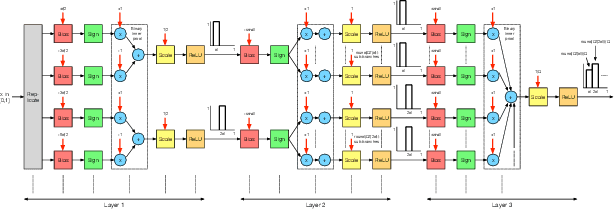
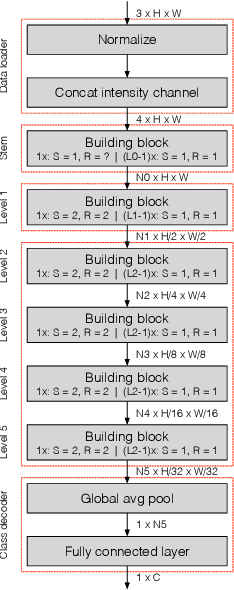
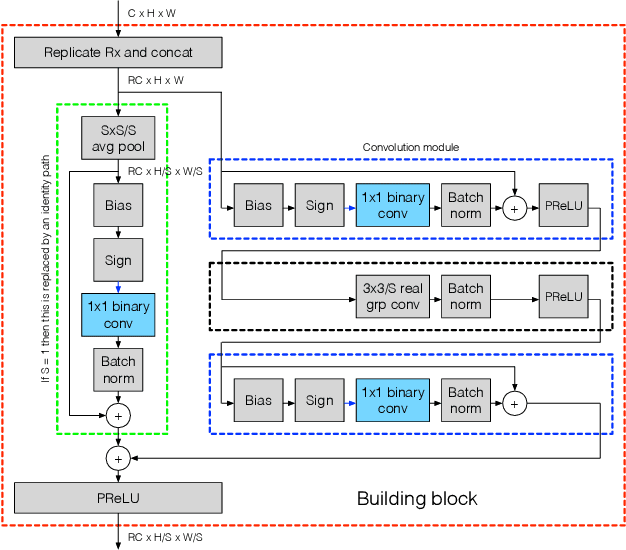
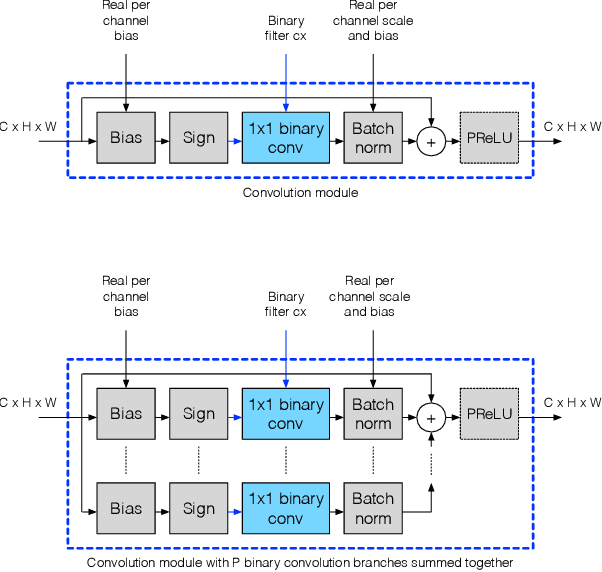
Abstract:This paper describes a CNN where all CNN style 2D convolution operations that lower to matrix matrix multiplication are fully binary. The network is derived from a common building block structure that is consistent with a constructive proof outline showing that binary neural networks are universal function approximators. 68.96% accuracy on the 2012 ImageNet validation set was achieved with a 2 step training procedure and implementation strategies optimized for binary operands are provided.
Deep learning for seismic phase detection and picking in the aftershock zone of 2008 Mw7.9 Wenchuan
Jan 18, 2019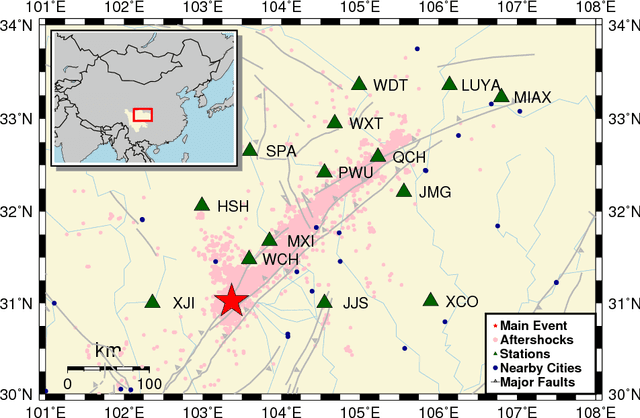

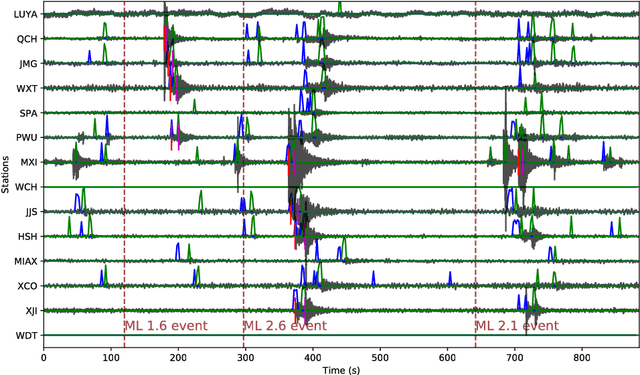
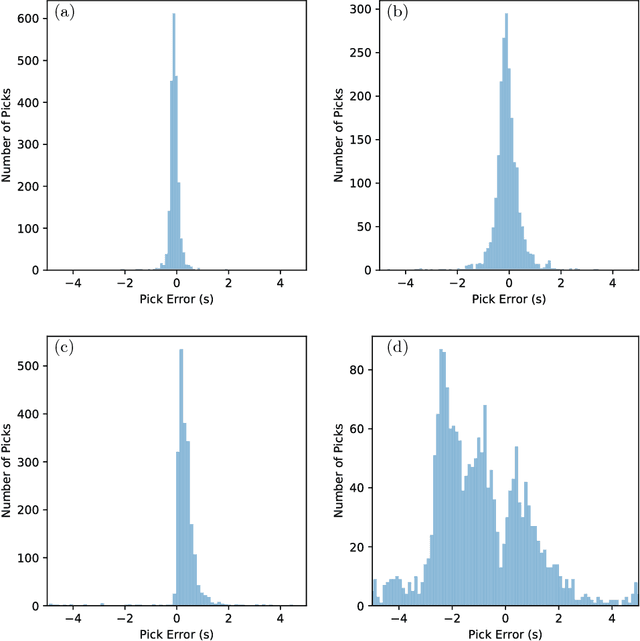
Abstract:The increasing volume of seismic data from long-term continuous monitoring motivates the development of algorithms based on convolutional neural network (CNN) for faster and more reliable phase detection and picking. However, many less studied regions lack a significant amount of labeled events needed for traditional CNN approaches. In this paper, we present a CNN-based Phase- Identification Classifier (CPIC) designed for phase detection and picking on small to medium sized training datasets. When trained on 30,146 labeled phases and applied to one-month of continuous recordings during the aftershock sequences of the 2008 MW 7.9 Wenchuan Earthquake in Sichuan, China, CPIC detects 97.5% of the manually picked phases in the standard catalog and predicts their arrival times with a five-times improvement over the ObsPy AR picker. In addition, unlike other CNN-based approaches that require millions of training samples, when the off-line training set size of CPIC is reduced to only a few thousand training samples the accuracy stays above 95%. The online implementation of CPIC takes less than 12 hours to pick arrivals in 31-day recordings on 14 stations. In addition to the catalog phases manually picked by analysts, CPIC finds more phases for existing events and new events missed in the catalog. Among those additional detections, some are confirmed by a matched filter method while others require further investigation. Finally, when tested on a small dataset from a different region (Oklahoma, US), CPIC achieves 97% accuracy after fine tuning only the fully connected layer of the model. This result suggests that the CPIC developed in this study can be used to identify and pick P/S arrivals in other regions with no or minimum labeled phases.
 Add to Chrome
Add to Chrome Add to Firefox
Add to Firefox Add to Edge
Add to Edge